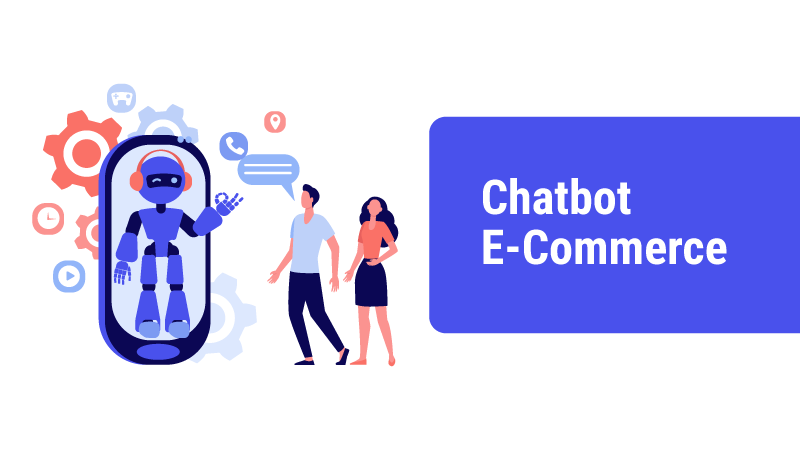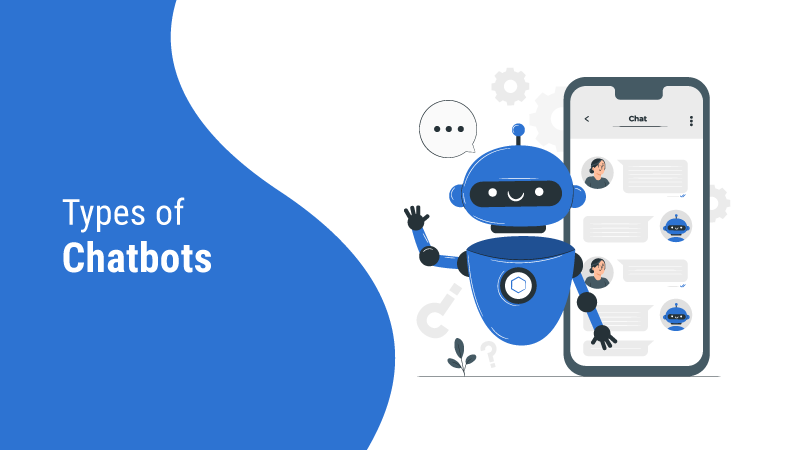Over the last two decades, the development of e-commerce has brought revolutionary changes in the way we make purchases in the retail sector. Even while offering the ease and speed of online shopping, it cannot offer one important factor – that is, the personalized service we are provided at a physical store by a customer care representative. Businesses have shifted to automation when they have found difficulty in meeting and adapting to the ever-changing requirements and demands of their customers. This resulted in using conversational AI chatbots that can improve customer-centric practices in e-commerce.
7 Ways chatbots help e-commerce business
The basic objective behind using or deploying a conversational AI chatbot in a business is to serve the customers better. Customer relationships and management are essential for the growth and success of any business. If a business fails to address the requirements of its customer, then there begins the failure of the business itself. There are many other uses for these automated chatbots. Let us talk about the different ways through which these chatbots help e-commerce businesses.
Delivers personalized services
AI chatbots are capable of recollecting previous conversations or any kind of interaction between a particular customer. The chatbot uses the data to initiate a customized conversation with the users the next time they interact with the chatbot. Moreover, these bots keep their complete attention on the customers while leading them throughout the whole journey of shopping by giving product recommendations and necessary assistance/support. Additionally, through these personalized services, you are increasing engagement rates and also save a lot of time for the customers by recommending only significant products.
Offers quick, cost-effective, and reliable services
Customers are happy when they get to shop 24*7 but that is not practical when it comes to physical outlets because they don’t function the whole day and night. But the e-commerce chatbots are live 24*7 to provide the best quality customer service to the customers. E-commerce chatbots are capable of building a live connection with users by enabling two-way communication similar to that of a real customer service agent. These conversational chatbots can answer up to 80% of repetitive questions by customers. Also, if the bot fails to resolve the problem, it will forward the issue to the live chat agent. Moreover, it makes the customer understand the advantages and offers of making payments online.
Display catalogs across multiple channels
Sometimes customers tend to purchase products they see or like while using a social media platform or any other app. In such situations, they wouldn’t want to go through a particular site or app to find out about the product they saw on another platform. Here, the most convenient way is to let them purchase directly over that app they are using. You can deploy your AI chatbot on multiple touchpoints like Instagram, Facebook, Snapchat, or any other platform. This way you can allow your customers to browse your catalogs directly from any application they use and make purchases from there, without switching to another app or website. This not only minimizes the customer’s effort and time but also provides them with an omnichannel experience.
Records real-time interactions
Enabling real-time customer interaction is a remarkable feature of AI chatbots in e-commerce businesses. The information collected during the interaction can be used to provide quality services based on user input. Quick access to crucial data helps in minimizing functional costs and increases the efficiency and effectiveness of a business.
Act as the perfect knowledge base
Providing the necessary information to the customers and creating awareness among them is a difficult process but quite easy for AI-driven chatbots. For instance, the bot will give single-touch access to the Frequently Asked Questions (FAQ) section on the screen whenever a customer chooses a particular product. Also, the chatbot can display any additional required information the customer asks for, within seconds. It helps in simplifying the purchasing process as there is effective communication between the chatbot and the customer, which in turn increases sales and customer engagement.
Gather analytics and boost sales
In e-commerce, no other factor is important as an interested customer who is ready to buy your product. These customers choose the products they need from the website and either add them to the cart or wish list, which will remain there for months without any action being taken. Because of this reason, many products remain untouched by customers and somehow, AI bots are changing this method altogether. Chatbots can learn and understand the preferences and requirements of customers by analyzing their previous activities on the website or application, their cart, and their product wish list. Based on this analysis they recommend products and services to the customers to develop the customer base.
Gather customer feedback
An e-commerce business chatbot mainly uses two ways to gather customer feedback – one is through reviews and the other is through forms. If a business pays close attention to gathering reviews manually, at some point they will realize that it is not cheap. It is indeed a time-consuming process. Therefore, the number of genuine reviews you get will be very less. The other thing is if your company is delivering a defective product to the customer, then definitely the customer will post a bad review. Negative reviews adversely affect the business, which is why the customer experience needs to be improved. Deploying AI chatbots in e-commerce businesses stimulates the feedback collection process within a limited period of time. Chatbots can interact and sympathize with customers, thus gathering feedback from them. In addition, they ensure that their problem is forwarded to the relevant team in real time. This minimizes the impact of poor marketing as well. Here, people are more likely to support your platform among their circle as one of the most trusted ones.
Wrap Up
The e-commerce chatbot always strives to satisfy its customers with an unprecedented experience. When your customer gets the best experience, it will automatically result in giving the best customer satisfaction rate. In addition to the business perspective, getting feedback from customers is very important. This is one of the best ways to identify weak points in the chatbot conversation stream, including wrong answers, poor speech design, continuous responses, and knowledge gaps.
Get Started with our AI Services
